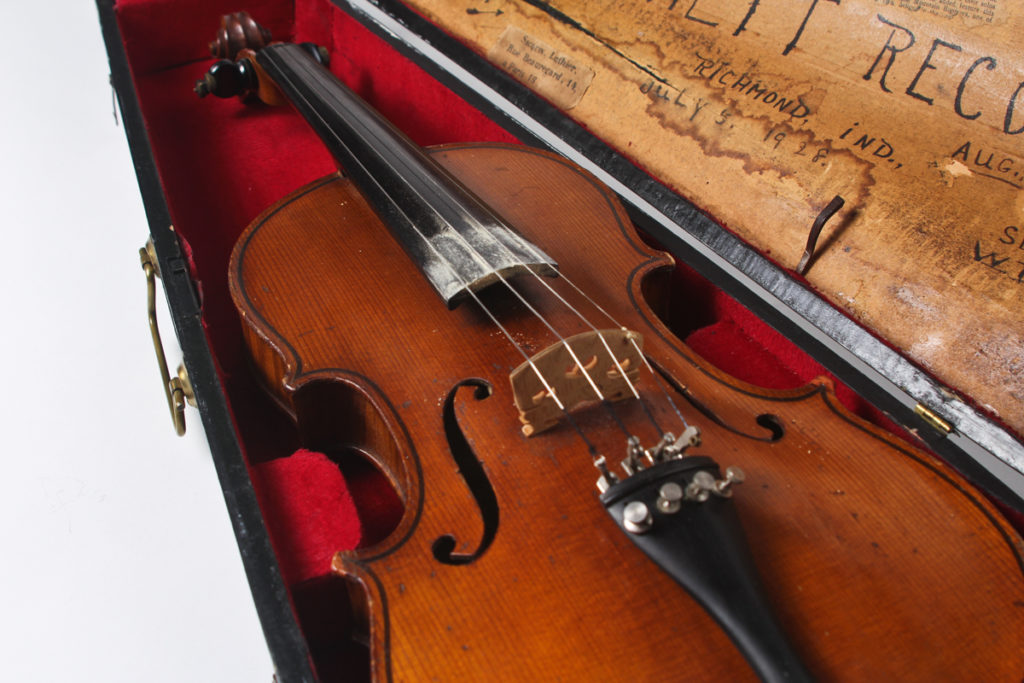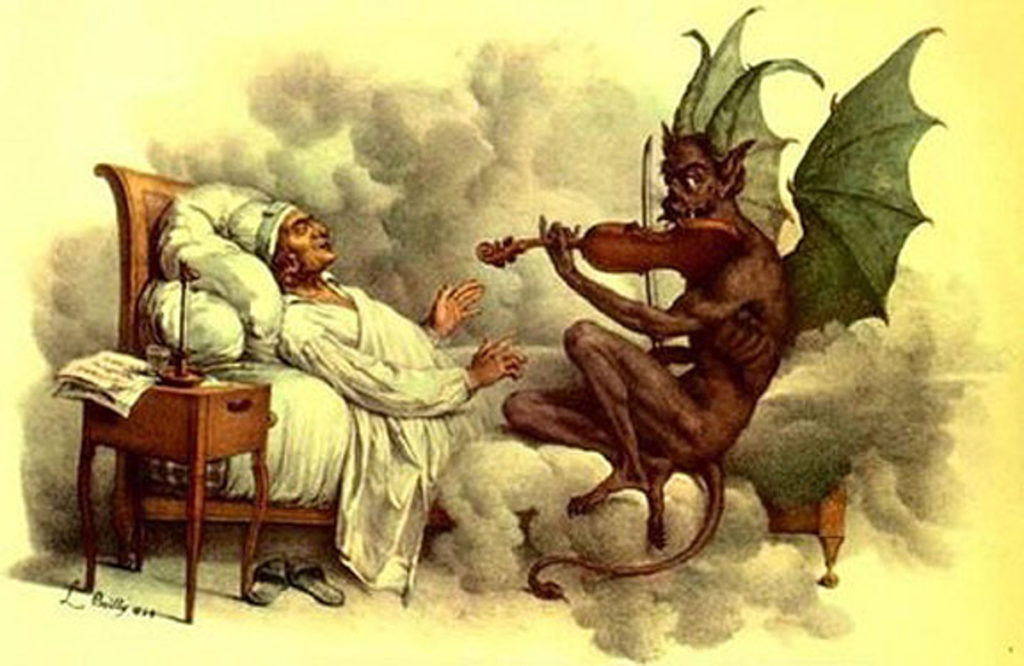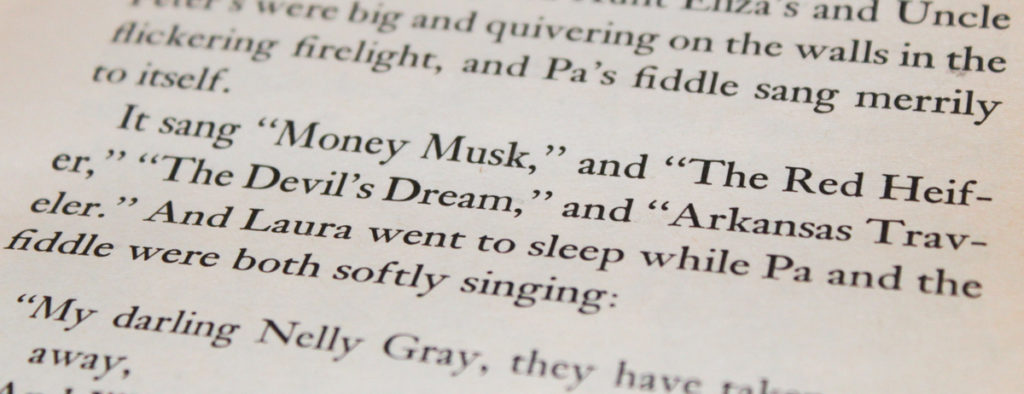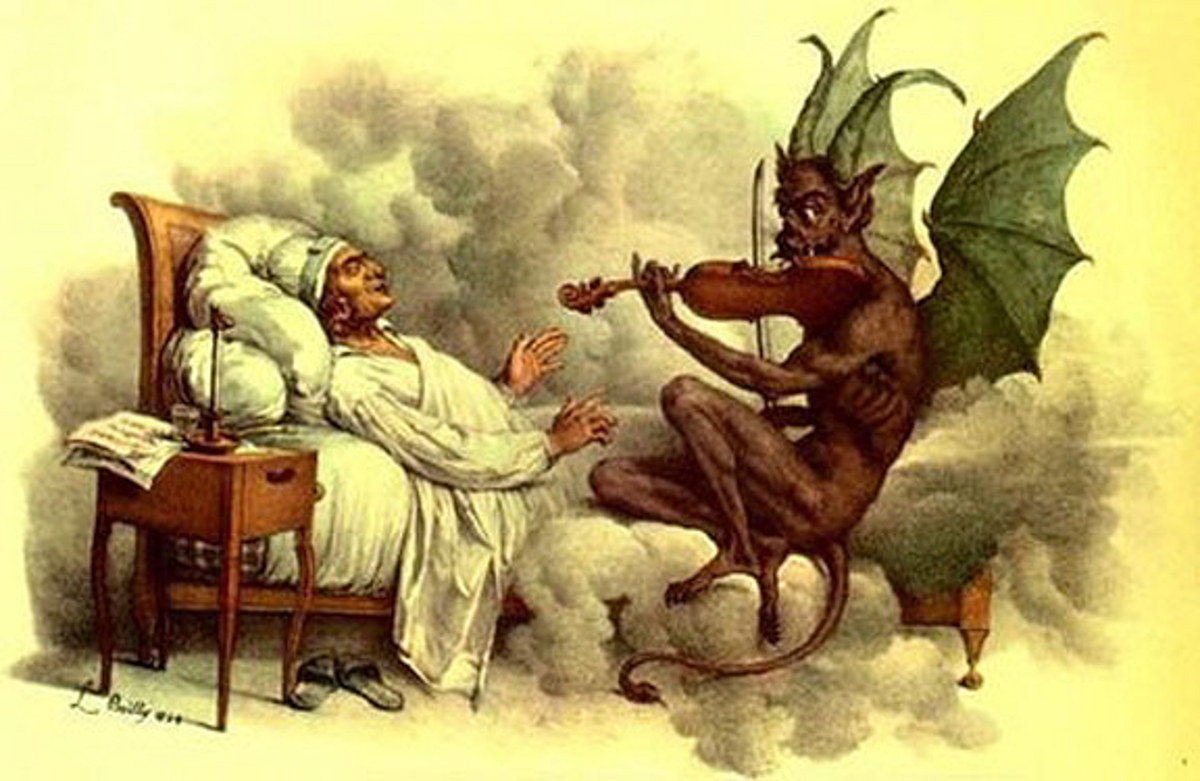You may have heard that A. P. Carter could play the fiddle, but refused to do so on record because it was “the devil’s box.” And just about everyone knows Charlie Daniel’s 1979 hit song “The Devil Went Down to Georgia” about a demonic fiddling contest. But here’s the question: Out of all the instruments, why is the devil so taken with the fiddle? Why not the accordion? The saxophone? I mean, surely the kazoo was born from hellfire, right?

Where there is fiddle music, though, there is often dancing, and where there is dancing, the devil is surely at play. I have stories of this in my own family – my grandmother’s Uncle Willard was very musical, but Grandma and her sisters would only dance to his music when their very religious Aunt Eugie wasn’t around to see them. The link between dancing and the devil is an old one in fact. Way back in the 4th century, St. John Chrysotom said that “where dance is, there is the devil.” Countless preachers over the centuries have espoused the same.
While the fiddle and its link to dancing was seen by many as the devil at play, the devil’s prowess with a fiddle and bow also brought inspiration. In the early 18th century, the Italian composer and violinist Giuseppe Tartini claimed that his most famous work, the “Devil’s Trill Sonata,” was delivered to him by the devil in a dream. This, of course, led to some imaginative depictions of what that might have looked like…

Illustration of the legend behind Guiseppe Tartini’s “Devil’s Trill Sonata.” Public domain image from Wikimedia Commons
Scotland’s favorite poet, Robert Burns, wrote “The Deil’s Awa Wi’ The Excise Man” a few decades later, in which the devil fiddles into town and dances off with the tax collector. The townsfolk react thusly:
We’ll mak our maut, and we’ll brew our drink,
We’ll laugh, sing, and rejoice, man,
And mony braw thanks to the meikle black deil,
That danc’d awa wi’ th’ Exciseman.
In case your Scots dialect is a bit rusty…basically everyone extends their grateful thanks to the devil, for with the tax man gone, they can booze it up all they want and have a big time!
With that rollicking party in mind, here are a handful of the most devilish tunes I know:
“The Devil’s Dream”
“The Devil’s Dream” is a standard Appalachian fiddle tune. Laura Ingalls Wilder remembers hearing this tune as a child in the 1870s, so it’s probably safe to assume that it was also a familiar one to fiddlers in our region at the time of the Bristol Sessions. It originated in Scotland as “The De’l Among the Tailors,” and it was also noted in an English folk tale from the early 1800s. It is played here by the Whitetop Mountain Band (featuring Radio Bristol DJ Martha Spencer and family).

“Did You Ever See the Devil, Uncle Joe?”
“Did You Ever See the Devil, Uncle Joe?” is another good fiddle tune. Fiddlin’ Cowan Powers and his family, who play it here, were the first family string band to record commercially…three years before the 1927 Bristol Sessions! I learned this tune as “Hop High Ladies,” and some may know it as “Miss MacLeod’s reel” – another import from the British Isles. Click on this link for an extra treat: Pipe Major Willie Ross playing both of these tunes in the early 20th century!
“Never Let the Devil Get the Upper Hand”
Speaking of the 1927 Bristol Sessions, here’s another devil-fueled tune recorded a decade later by Bristol Sessions artists The Carter Family: “Never Let the Devil Get the Upper Hand” – which just seems like good all-round advice! Spoiler alert, however: the devil DOES get the upper hand of the young man in this song and convinces him to murder his lover. This story might sound familiar if you’ve ever heard the old murder ballad “Knoxville Girl.” It’s basically the same tale, though the latter adds a lot more gruesome detail.
“The Old Lady & the Devil”
In contrast, a woman gets the upper hand of Old Scratch – and her husband! – in “The Old Lady & the Devil,” recorded by Johnson City Sessions artists Bill & Bell Reed. In this tune, a farmer happily lets the devil carry off his wife, but she raises so much hell in Hell that the devil brings her back home again. Dave Rawlings included a fantastic version of this song on his 2017 album Poor David’s Almanack… though he shortens the chorus and leaves out the bit where the woman whacks her husband with the dasher from the butter churn.
That gives you just a few of the devilish tunes out there, but I hope the music and the links between the devil and the much-loved fiddle get you in the mood for a very Happy Halloween!


